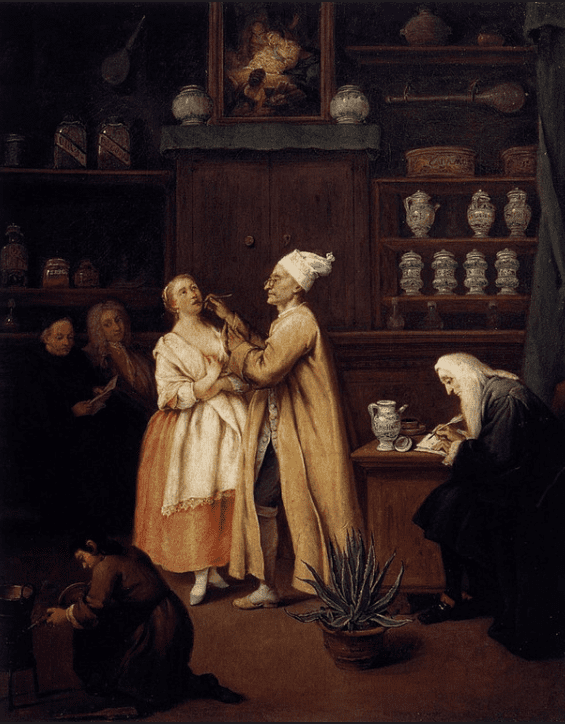

Two paintings of pharmacies are shown here: a Medical practitioner taking a lady’s pulse in a pharmacy (Wellcome Library) by Emili Casals I Camps (1882) and The Apothecary by Pietro Longhi, from the Accademia in Venice (1752).
The man taking the woman’s pulse in the Casals painting is probably a physician, and the one looking on appears to be the pharmacist. But in the Longhi painting, an apothecary, or pharmacist if you will, is about to look down a woman’s throat and provide primary care by prescribing some nostrum from his stock to make her feel better.
For many years in many countries apothecaries along with barber-surgeons provided most of the primary care for the greater part of the population. In England in the 1700s, apothecaries were some of the most common medical practitioners, five times as numerous as physicians, and allowed to practice without having to have studied at a university. The Society of Apothecaries had become separated from the Grocer’s Company in 1617 and retained its right to license medical practitioners until 1999. The activities of its members have been best summarized as “medicines, perfumes, spices, herbs, comfits, antidotes, aphrodisiacs, antiseptics, tonics, purgatives, laxatives, emetics, astringents and general cure-alls.” In other countries, apothecaries and surgeon-barbers were also allowed at various times to sell drugs and practice primary care.

Leave a Reply